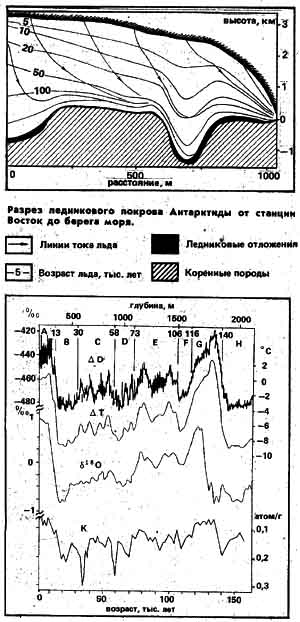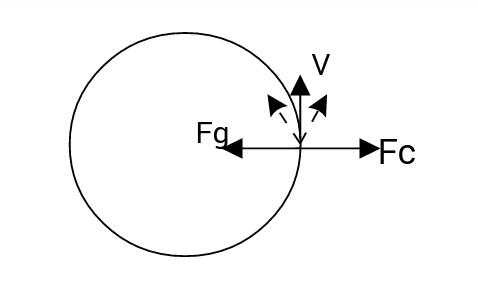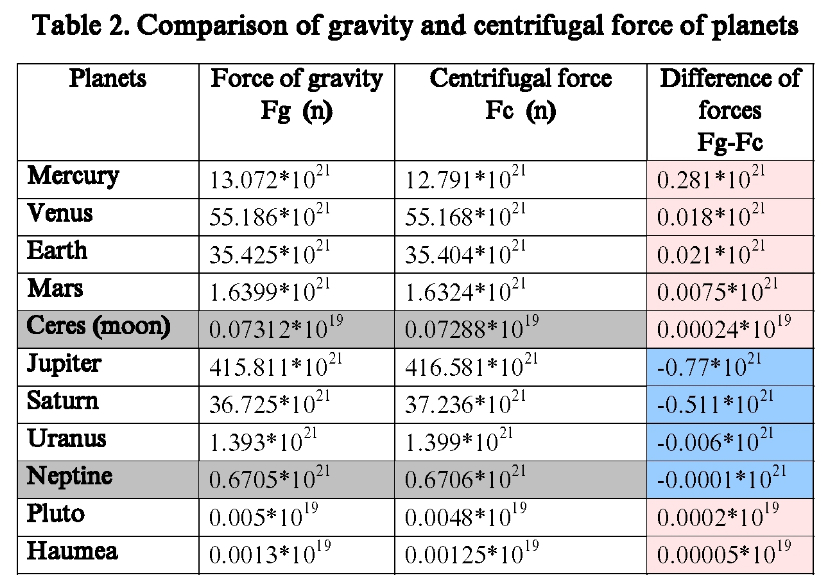 Полная версия
Полная версияSolar system / Alternative theories

In the book "Solar system" by Svetlana Denisova six theories are presented as an alternative to the conventional opinion. Astronomy is not the author’s profession, but a hobby. Mostly it is not scientific, and philosophical work. There are some simple formulas, calculations and tables. Reading this book does not require any special knowledge. The book is written in a simple and easy to understand language. This philosophical analysis allows us to understand a lot of things in the world around us.
1. Global climate changes
In the middle of the last century glaciers of Antarctica and Greenland have been thoroughly investigated. For these purposes the ice cores have been extracted from deep wells. These studies have shown, that for many thousands of years the climate is gradually cooling down. Periodically, once in 100–120 thousand years, the temperature rises sharply by about 10°C. This contradicts the fact, that the Earth's orbit decreases, as it follows from the theory #.2. The climate should become warmer. The climate has really become warmer in recent years, but it is connected, most likely, with the activity of civilization, and not with the orbit change. Gradual and constant cooling of the climate for many millennia is most likely due to a faster "burnout" of the Sun compared to a decrease of orbits.
It is known, that marine sediments are located even on the highest world peaks. From which it follows, that the surface of the "young" Earth has been more even, and it was covered completely or almost completely by the ocean. Initially, the life on Earth originated in the ocean. Mainland has been formed, probably, later. Conditions for life on the land first appeared on the poles. Then, as the climate grew cooler, the life spread from poles to the middle latitudes and then to the equator. Further cooling of the planet led to the formation and proliferation of ice caps at the poles, decrease of the world ocean level and land surface increase. The warm shallow seas were on the Earth in the period of small polar glaciers or their absence. The gradual transition of a significant part of the water from liquid state – into ice and moving to the poles led to bogging and complete drying of ancient seas. If all Antarctica and Greenland glaciers melted, all ancient seas would be in their place.
The expanding Antarctica glacier gradually displaced all living things to the shores. Less and less land, suitable for life, remained on this continent. All its inhabitants had to look for food in the ocean. There was a many-thousand-year process of changing species: land animals turned into marine inhabitants. Only those species of the polar continent inhabitants survived, which had adapted to live in water. Apparently, the mammals appeared in the ocean in this way: whales, dolphins, etc.
The ice age
Studies of ice cores, extracted from the wells of Antarctica and Greenland, allow determining the duration and the end of the last ice age. The graphs shows the results of the study of ice cores at the Russian polar station “Vostok” [1]

Graphs of studies of ice cores [2]
The top graph shows a change of deuterium content in the ice. This isotopic study was conducted throughout the cylindrical ice cores and provided the most detailed data. Other studies were conducted in interval 2.5 m and were more approximate. Reduction of deuterium content in the ice corresponds to a temperature decrease. The graph shows, that between the temperature maximum about 130 thousand years ago and its minimum about 12 thousand years ago, there was a steady temperature decrease, which sometimes was alternated with short warming.
On the Dome Concord 75° sl a glacier age was determined as 890 thousand years old, by the ice cores with the total length of 3270 m. Although the researchers believe this data was very approximate. The speed of cooling can be determined from the graphs. During 120 thousand years the temperature decreased by ~ 10°C. The last ice age ended 10-12 thousand years ago. By the end of the ice age the Earth has been so cool so, that the glaciers occupied, presumably, the fourth part of the continents. Glaciers themselves contribute to their spreading, by reflecting the sunlight and cooling the surrounding air.
In the Ice age a map of the Earth was somewhat different. The global sea level was lower, because a significant portion of the water was in the ice. The continents had a wider coastal zone, but a considerable part of them was under the ice and was not suitable for life. There were some islands in the Ice Age, which we can see now on the maps as shallow waters.
In the Ice Age lot of mammoths and other animals lived in cold climatic zones. They lived in the large parts of North America and Euro-Asia and were well adapted to the cold climate.
Ice Age ended, when climate warmed suddenly.
Great flood
From times of the Old Testament, people heard about the Great flood, however, very few people trusted this legend, because it was absolutely not clear, where such mass of water has come from and where it has disappeared. It is logical to assume, that the Great flood was the end of the Ice Age.
When it was?
1. The graphs of Antarctic ice cores study show, that the abrupt warming occurred about 12 thousand years ago (see the upper graph).
About a same time, a global sea level rose by ~70 m, to the current level of 0 m.
2. Around the same period, as some researchers believe, the mass death of mammoths occurred.
3. Probably, the flood has caused the death of the previous civilization. Plato, who lived around 400 BC, states, that Atlantis perished 9.5 thousand years ago. If we add our 2000 years, then 9.5 + 0.4 + 2 = 11.9 thousand years ago.
4. Edgar Cayce, in the reading 5750-1 dated November 12, 1933, stated: "From time as counted in the present we would turn back to 10,600 years before the Prince of Peace came into the land of promise, and find a civilization being disturbed by corruption from within to such measures that the elements join in bringing devastation to a stiffnecked and adulterous people."[3] 10,600 years before Christ 1933 will be 12.533, rounded to 12.5 thousand years.
These four independent coincidences give reasons to believe, that date is approximately right. Cayce indicates the fall of morality as the cause. However, there must be a physical mechanism of the past global catastrophe.
Various versions can be assumed as the explanation of abrupt climate warming. The most probable reason of the climate warming may be periodic passages of a large celestial body near the Earth, for example, a long-periodic comet. Arising between them a gravity force can be the cause of displacement of the Earth concerning poles and fluctuation of axis. As a consequence, the cold zones could be shifted to warmer latitudes and continental glaciers have melted. Glaciers are "refrigerators" of the Earth. Reduction of glaciers has given way to the global climate warming on the planet.
The picture Ice of Antarctica [4] shows, that the maximum height of the glacier is not at the South Pole, but it is shifted. The entire glacier is shifted with respect to the pole. The Antarctica map shows, that the maximum height has shifted relative to the pole at about 15° and coincides with the geomagnetic pole. This may be the proof, that sometime in the past a displacement of the Earth concerning axis has happened.
Probably, the orbit of a comet is not constant. Sometimes it can pass closer, sometimes farther from the Earth, and warming may be more or less intense, accordingly. Probably, once in 100-120 thousand years, the comet passes very close from the Earth. This can explain periodicity of warming.
Variation of planet position has happened very quickly, by Plato – in one day. The consequences of it were earthquakes and continental plate displacement. The glaciers could not melt during one day, as this process required several weeks. The global sea level had been rising gradually and flooded the low coasts of continents and low islands. The ancient sunk cities are found everywhere, in Pacific, Indian and Atlantic oceans. The flood destroyed everything in its way. Only mountains could resist flood, but there were also melting glaciers on the tops of the mountains and avalanches have been falling from the mountains. Map of the Earth became like we see it today.
Plato in the dialogue "Timaeus" describes the Great Flood: "… But afterwards there occurred violent earthquakes and floods; and in a single day and night of misfortune all your warlike men in a body sank into the earth, and the island of Atlantis in like manner disappeared in the depths of the sea. For which reason the sea in those parts is impassable and impenetrable, because there is a shoal of mud in the way; and this was caused by the subsidence of the island."[5]
Not only Atlantis, but many other cities were flooded by the Great Flood. Flooded cities are found off the coast of Turkey, Greece, in the Black Sea, off the coast of the Japanese island of Okinawa. The pyramids are found at the bottom of the American Rock Lake, which age is estimated about 10 thousand years. On the shores of the Indian state of Gujarat, the city of Dwarka is found – the legendary city, the capital of the Kingdom of Krishna, is one of the seven oldest cities in India. Dvarka, located at a distance of 30 km, on the shore of the bay, was discovered in the Arabian Sea at a depth of 7 meters. Its estimated age is 12 thousand years.
As a result of a flood, the risen level of World Ocean flooded islands of Atlantis. One of the flooded cities with pyramids, a sphinx and other structures has been found in the area of Bermuda triangle, at a distance of 700 m to the east from Cuba. This huge Empire had colonies in South and North America, in Africa and Europe. Probably, all pyramids on Earth built by residents of Atlantis. Underwater photos of a sunken civilization can be seen by clicking the link: underwater towns [6]. Atlantis was a highly developed civilization. Perhaps, the anomalous phenomena in the Bermuda triangle are somehow connected with the sunken cities.
Apparently, it is the Great flood caused the death of mammoths. Not only the mammoths, but all the flora and fauna, that existed on the edge of the glaciers, was washed away and destroyed by the Great flood. People of Komi, Khanty and Mansi have legends stating, that when the water has filled in all ground, the mammoth floated in water, but the birds sat down on their "horns" and mammoth has sunk (see Wikipedia).
After the Flood new life cycle has begun on the Earth.
Our civilization will survive another Great flood. It will be one of the stages of the Apocalypse, foretold by John Evangelist. A new Flood will be different, because there are no ice mountains in the north of continents. The Earth will turn again. The glaciers of Antarctica and Greenland will melt. The Bulgarian clairvoyant woman Vanga predicted it. The global sea level will rise and will flood the coastal zones and lowlands of the continents. Europe will turn into islands and the seas. World hunger will be longest in the history. Nostradamus has predicted it.
2. Theory of non-constant orbits
Not circular-wise, but spiral-wise
Space bodies may have different shape of orbit: 8-shape, elongated and circular. This article considers only the movement of bodies along orbits, which are close the circular. Usually planets and some their satellites move along such orbits. In our time one can hear a lot about the expanding universe, but the official assumption is, that the planets orbits do not change. Nevertheless, they do not move along the circle, but along the spiral.
Spiral movement of celestial bodies was known since the most ancient times. For example, the ancient Greek philosopher Plato wrote in the dialogue Timaeus:”… Movement of identical bodies imposes a spiral bending to all star circles due to the opposite direction of two [main movements]”. Here by the opposite direction of two [main movements] should be understood as the counteraction of the gravity force Fg and centrifugal force Fc. Now these concepts are being disputed, given other names. But it does't change their essence.
In the ideal case, when these two forces are equal, the speed vector of a rotating body is directed along the tangent line to the orbit, perpendicular to radius. However, in the actual world, it is difficult to find something ideal. The predominance of one force over another leads to the speed vector (v) deviation toward the greater force and rotation along the spiral. If gravitation force Fg prevails (Fg>Fc), the speed vector deviates to the center, and movement goes along a descending spiral. If centrifugal force prevails (Fc>Fg), movement goes along an ascending spiral.

The last satellite can "come off" the star, if gravitation force is significantly reduced. Possibly, that’s the way the free moons emerge in space. The satellite, nearest to the center, rotates on a descending spiral, because the gravitation force predominate. Ultimately, it can lead to the satellite fall on the central body. Both these forces are not constant and tend to equilibrium. If the orbit becomes more distant, the speed will be decreasing and, consequently, centrifugal force will be decreasing too. That is, as if the centrifugal force adjusts to the changing force of gravity. Although these two forces are not equal, they can be regarded as relatively equal at this point of time Fc=-Fg.
In the simplified version centrifugal force is defined under the formula: Fc=-mp*v2/R,
mp – mass of planet, v – speed of planet, R – radius of rotation.
Under the Newton’s law the gravity force is defined by the formula:
Fg = G*ms*mp/R2, ms
ms and mp – mass of the Sun and planet, R2 – square of the distance between them, G – gravitational constant ~6.67384*10-11m³/(kg/с²).
Let's record equality of two forces:
G*ms*mp/R2=– mp*v2/R.
Let's simplify the expression by multiplying the both sides of the equality by R and dividing by mp, and we will get:
G*ms/ R=-v2
It follows, that the less the Sun mass is and the more is the distance from it, the slower is the movement of planets in the orbit. Conversely, than the Sun mass is greater and the the radius is smaller, the speed is greater. This is confirmed by the modern calculations and measurements of the planets speed (see table 1). Another conclusion from this formula is, that the orbital velocity does not depend on the mass of the satellite, but only on the mass of the central body and the distance to it. Saturn has two orbits, on each of which three different satellites are (for example: Diona, Elena, Polydeuces), but they have the same speed. The mass of the Sun continuously decreases, decreasing the speed of the satellites.
With the change of the orbit, the speed of a celestial body in the orbit changes too. This was also known to ancient Greek astronomers: «… ones of them moved along a greater circle, the others – along the smaller. They moved quicker on smaller circles, but slower on the greater ones» [Plato, dialogue "Timaeus"]. With the orbit decrease, the speed of celestial body and centrifugal force increase.
Dynamics of orbits
Table 1 sets out the main characteristics of the planets of the Solar System (hereinafter the SS). The asteroid belt (destroyed planet Phaeton) in the table is represented by its moon Ceres. Two dwarf planets: Pluto and Haumea represent the Kuiper belt.The data for the Table 1 has been taken from Wikipedia 07.07.2014 and may not match the further changes.

Based on the formulas given above and the data in Table 1, we can calculate the approximate values of the gravitational force and centrifugal force for the main planets of the Solar System (SS).
The results of calculation of the gravity force and centrifugal force for the 11 planets are shown in table 2 in the order of their distance from the Sun.
For all planets they are not equal. Consequently, they all have a spiral orbit
From table 2 it is clear, that gravitation force prevails at 4 planets nearest to the Sun (Mercury, Venus, Earth, Mars). If other possible influences on their orbits are not taken into account, it should be assumed, that they spin along the decreasing orbits – a descending spiral. Among them Mercury has the fastest decrease, and Mars has the slowest one.
Centrifugal force is predominating for the planets Jupiter, Saturn, Uranus, Neptune. Therefore, their orbits are ascending, it is a rising spiral. Among them Jupiter has the fastest removing and Neptune – the slowest.
Orbit of Ceres (Asteroid belt) is descending and is the most stable among them. It is a division between ascending and descending orbits. Among the four gas giants the Neptune has the most stable orbit. It is also a division between the descending and ascending orbits. In front of the Neptune the centrifugal force prevails, but behind it the gravity force prevails. The orbits of Pluto and Haumea are descending and the most stable of all. Similar processes occur at numerous satellites of gas planets. The nearest of them have descending orbits, but remote have ascending orbits.
Let's calculate, what the Earth orbit would be like, if the gravity force equaled to centrifugal force: 35,404*1021n.
R=√(G*ms*mp/Fс)
R=√ (6.67384*10-11*1.9891*1030*5.97219*1024/35.404*1021)=1.49643*1011m

The difference between the actual and calculated orbits is 0.00045*1011m or 45000 km (it is ~3.5 of the Earth diameters). Consequently, the predominance of the gravity force by 0,021*1021n gives the Earth orbit decrease by 45000km in comparison with that one, which should be at the given speed 2,978*104m/s. Such difference in radii shortens the orbit length by 2π (R2-R1) ~282600km.
Let's calculate, what the Earth speed would be, if centrifugal force were equal to the gravity force 35,425n.
v= √ (Fg*R/mp),
v= √ (35,425*1021*1.49598*1011/5.97219*1024)=2.9789*104m/s
The difference between the actual and calculated speed is: 2.9789*104-2,978*104= 0.0009*104m/s. That is speed of the Earth at ~9 m/s is less, than it should be at the stable orbit.
Based on the assumption, that orbits dynamics was such for a long time, and by "scrolling" the time back, we receive, that all the basic planets SS (except Koiper belt) were initially closer to the asteroid belt and to each other.
Influence of the space bodies mass on the forces ratio
The insignificant increase of a planets mass can occurs due to the falling on them of various space bodies: meteorites, asteroids, space dust and others. The change of planets mass equally influences both counteracting forces and does't break their ratio. Perhaps, planets can lose their mass, for example, due strong eruption, as on Mars. The masses of the planets can be considered relatively permanent, that can not be said about the stars.
The change of the Sun mass does not affect the centrifugal force, but it changes the gravity force. A slight increase of the sun mass occurs, as in the case with planets, due to the fall of various space bodies onto it. Given the size of the Sun and the gigantic force of gravity, the falls occur much more often, than on planets. This process has an accidental nature, and its influence to the orbits of the planets is negligible and can be ignored.
The stars mass decrease due to their continuous burning has a much greater impact on the orbits. The burning Sun loses about 4.26 million T/s or 1.34*1014 tons/year [Wikipedia]. Not only the Sun, but also the other stars have the process of burning and decrease of the mass. Now the age of SS is about 4.6 billion years. It was determined by the fallen meteorites. Although there’s no guarantee, that they belong to SS and were formed simultaneously with it! As the other data regarding SS age is absent, the mass of the Sun 5 billion years ago, perhaps, was about 1.98977*1027 tons, taking into account the decrease coefficient. During all this time the Sun has lost 6.7*1023 tons, that is, approximately, equal to two masses of Mercury, which is a little amount. Perhaps, there is a hidden mass (decay), which the Sun loses much quicker?
This factor should have the constraining impact on the descending orbits and, on the contrary, the accelerating influence on the ascending orbits. The SS age and the speed of the Sun mass decrease raise big doubts. Most likely, the Sun age and the speed of the mass decrease are much greater. Possibly, when SS was young, all planets were arranged in a more compact way, closer to asteroids belt. The Sun mass was and energy sufficient enough, to were the life conditions on the farthest planets. Conditionally, the distance from the Sun can be divided into 3 zones:
1st, close to the Sun, may be called conditionally a "red zone", where it is very hot;
2nd, average, may be called a "green zone", where the temperature is from -50o to +50oC, it is a zone of life;
3rd, distant, may be called a "blue zone", where it is very cold.
Now the Earth is in the "green zone". There are pyramids on Mars, therefore, much earlier this planet was warmer, and it had conditions for life and construction. If we assume, that initially the "green zone" was behind the asteroids belt, the giant planets could pass through the zone of life in the process of decreasing solar energy. Earth at that time was in the "red zone". It is known, that in the most ancient times the climate was warmer, then gradually it cooled down, and the Earth poles became covered by glaciers.
How can it be explained, if orbit descending follows from the calculation and there has to is a climate warming? Presumably, the "zone of life" descending quicker, than the orbits of the planets Mars, Earth, Venus and Mercury. It can explain the passing of Mars through the "zone of life". The Sun mass and energy are decreasing quicker, than descending of the orbits. It contributes to their cooling.
3. Destructions in the Solar System
Nowadays there is a generally accepted view, that giant planets: Jupiter, Saturn, Uranus, Neptune have always been the gas spheres. In my opinion, it is absolutely untrue. They were the same, as the solid planets: Earth, Venus, Mars, Mercury. It is very likely, that during the "young Sun" life and civilizations existed on them. These planets, making up the bulk of SS planets, have been destroyed, apparently, due to the one reason.
Gas giants have the similar characteristics:
– the absence of a solid crust;
– low density;
– rapid axial rotation (10 hours/day, Neptune – 16 hours/day);
– the presence of fragmentary satellites in the nearest orbits;
– the presence of rings;
– a similar composition of the atmosphere.
What could lead to the destruction of the solid crust of these planets? The main difference between "gas" and "solid" planets is the presence of rings, consisting of dust, small and large fragments. Most likely, they were shattered satellites! The cause of the destruction of the giant planets could be the destruction of the satellite on the nearest orbit.
So the most part of SS planets has been destroyed. Behind the Mars's orbit is zone of destructions. The planet Phaeton between Mars and Jupiter orbits has been completely destroyed and has formed a belt of asteroids. Ceres – the moon of Phaeton and some other satellites, not of lunar type, has remained on this orbit. Four gas giants: Jupiter, Saturn, Uranus, Neptune have the destroyed crust, but they kept the spherical form. May be, in the Kuiper belt, the crust of several dwarf planets has been destroyed also. Only 4 small planets: Mercury, Venus, Earth, Mars and few dwarf planets of the Kuiper belt, remained intact. All this proves, that SS is very old.



